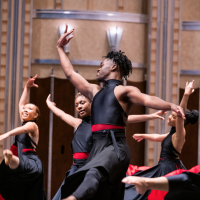Throughout my varied career in the arts, which has been invested as much in teaching, advocacy, management and governance as it has been in actually making art, I have claimed that my technical training in the visual arts has put me in good stead no matter what I was called on or assigned to do.
And it is true. The balance of color and texture in a collage or a weaving, or between the shape and the glaze of a pot, is different only in medium but not concept than the balance between spoken word and sound both captured live and crafted in the studio that informed my work in radio production (I spent five years as the first producer and on-air reporter for arts and culture for Cleveland Public Radio from 1987 through 1991).
Over my nearly 18 years at the Cleveland Foundation, I have had to balance my passion for the arts with a dispassionate analysis of the many requests for support we receive. I have worked to develop programs that both serve the artistic missions of the organizations in our community at the same time they push for planning, accountability and good management to assure the mission can be served long term.
An artist needs to know her materials and how far they can be pushed or stretched in service of her creative vision. So too, I have to weigh the extent to which I can push for projects and organizations that deserve a chance – even though they may not make a strong showing on paper.
And every artist knows you can’t rush the process. In fact, the process is often the most important and satisfying part of work – and creative expression. It’s “the making,” not the thing finally “made” that delivers satisfaction. The same holds true with grantmaking. It is the ongoing process of engagement and partnership with passionate people that creates the incredible satisfaction of my work.
These somewhat sentimental musings were prompted by a truly inspiring piece written by a colleague of mine, John Killacky, about how his training as a dancer prepared him for many other roles in life and became his path toward recovery from physical challenges in a truly creative and unconventional way. His story’s a lot better than mine.
